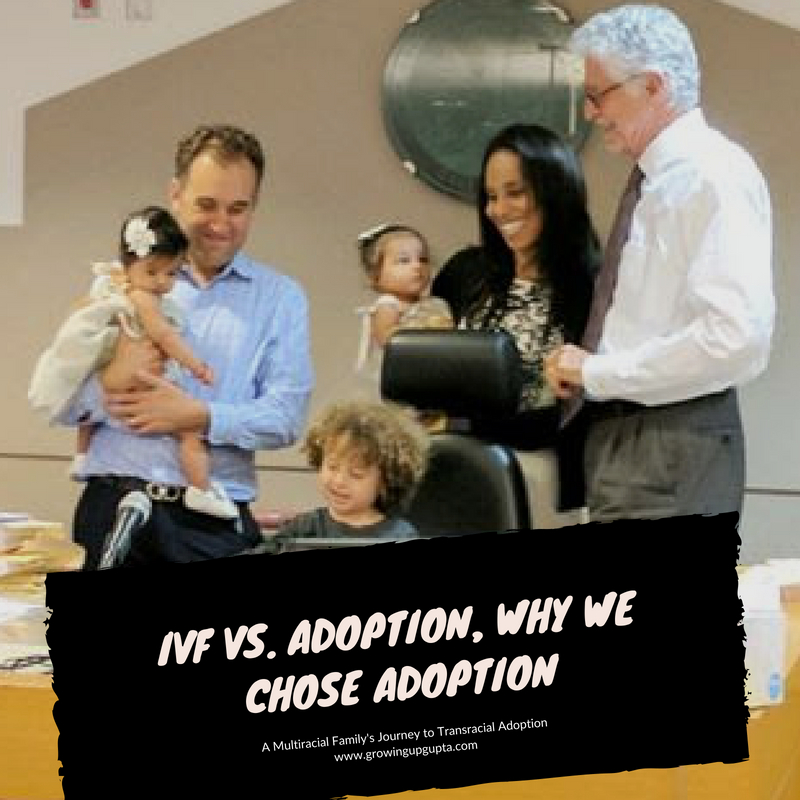
IVF Vs. Adoption, Why We Chose Adoption: A Multiracial Family’s Journey To Transracial Adoption
IVF Vs. Adoption, Why We Chose Adoption: A Multiracial Family’s Journey To Transracial Adoption

Tell Us About Your Family
Hi, I’m Alexis. I’m a stay at home mom who works harder than she ever did in the private sector but, that’s just parenthood, right?!?! I’m married to a great man who also happens to be a pediatrician. As it turns out, we ended up really needing his physician connections. We have a 4.5-year-old son, who was born with a very rare kidney condition. He’s strong, confident, and keeping him healthy is a full-time job. When he was a baby we couldn’t imagine having more children. I couldn’t see past the day to day struggles of keeping him healthy. As the years went by and the hospitalizations started happening less frequently we started daydreaming of more children. I am one of three children, and the oldest of my sisters, who are twins. And my husband is also one of three as well.
A Difficult Pregnancy
IVF And Adoption-Making A Choice

Welcoming Our Twin Daughters Into The World
When You Were Starting The Adoption Process, What Shaped Your Views On Transracial Adoption, And If It Was Right For Your Family
The open adoption process, we went through, required us to answer many questions around our comfort level with transracial adoption. Being biracial myself I didn’t think twice about entering into a transracial adoption. I grew up with a Black dad and a Caucasian/Jewish Mom. So learning that our daughters’ racial background was an Indian birthfather and Caucasian birthmother seemed like a perfect match to us. We ourselves are a biracial family, I am mixed and my husband is Caucasian. We are already raising a multiracial child. Again, the pieces just seemed to fit and we started to educate ourselves.
How Did You Educate Yourself Before Adopting Your Twins
We talked extensively about how we would honor our daughters’ Indian culture, and expose them to “people who looked like them”. We reached out to our friends and friends of friends and started to build a community of Indian contacts whom we could call on when the time came. We read books and watched programs and learned about the different Indian holidays, and talked about which ones we would want to incorporate into our family. After our girls were born social media became a huge support for me. I’ve made friends across the globe who have been a huge source of guidance and information.

What Was Your First Thought When You Held Your Twins For The First Time
My first thought was “a miracle happened, and she is in my arms, and my goodness is she beautiful!” I know it sounds corny but I knew they were conceived for us. God’s plan had worked, and on January 12th, 2017 we went from a family of 3 to a family of 5.
Have You Had Any Offensive Or Strange Comments? If So, What Are Some Examples
Interestingly enough, the only strange comment we have got so far was from a woman who was looking at all three of my children, and remarked: “is he (my bio son) yours?” Since my girls’ complexion is identical to mine, whereas my son is fairer. I actually had more offensive comments made when my son was a baby about “is he yours” than I’ve had about the girls.
How Do You Plan To Approach Heritage, Cultural History, Or Cultural Celebrations
We will continue to educate ourselves and be open to our daughters’ desires as they grow. We may think celebrating Holi is important but, as they get older they will find other cultural events that resonate with them. We want to remain open to where their hearts lead them. Like much of life, we will all learn as we go but, creating an environment conducive to cultural research and exploration is key for us.
Do You Have Any Tips For Other Families Considering Transracial Adoption
Be honest with yourself about what it means to raise a child from a different culture than your own. Love is important but it’s not the only thing a child needs. We all want to belong or fit somewhere, make sure you are open, and able to create a space where your child can feel like they “fit” socially, culturally and emotionally.





